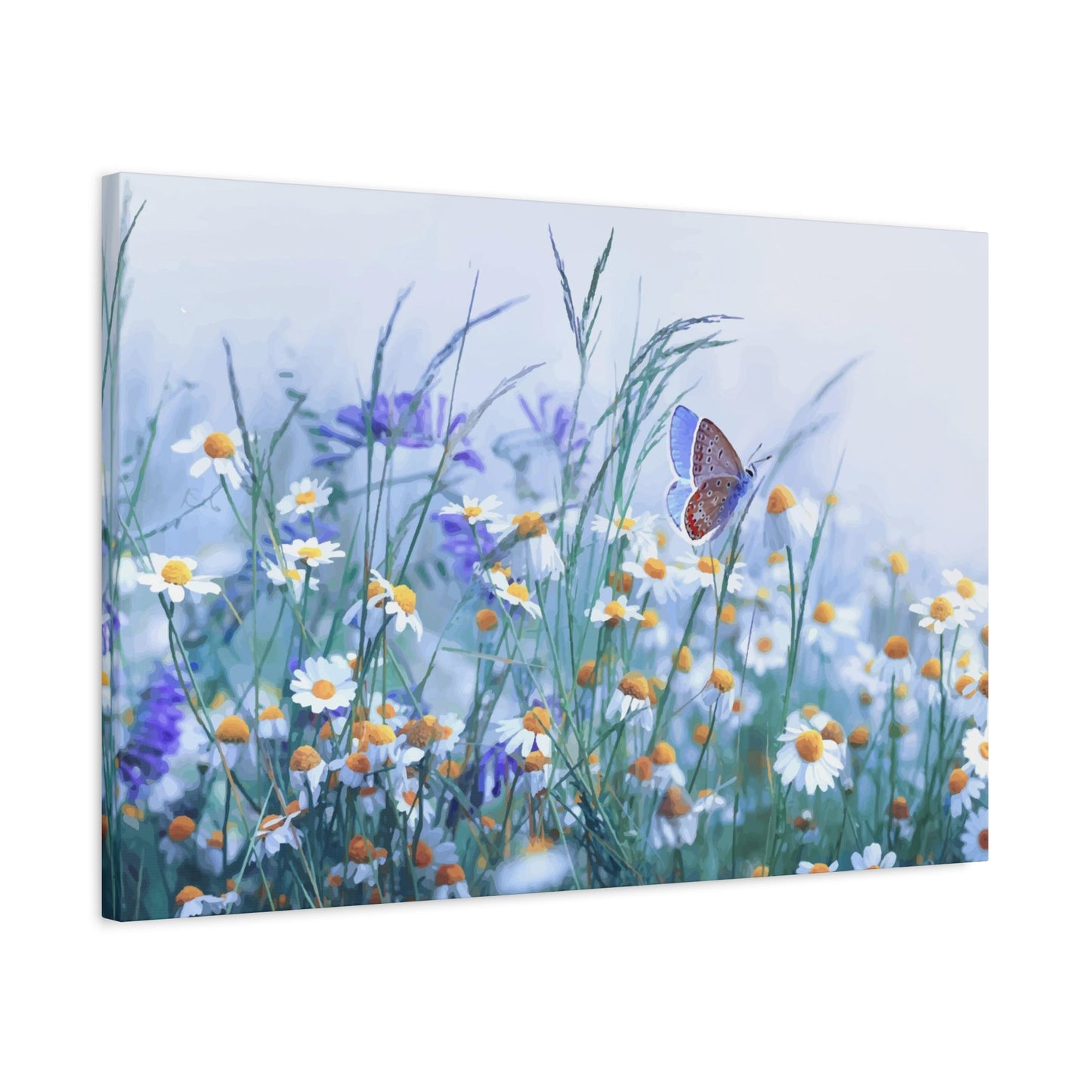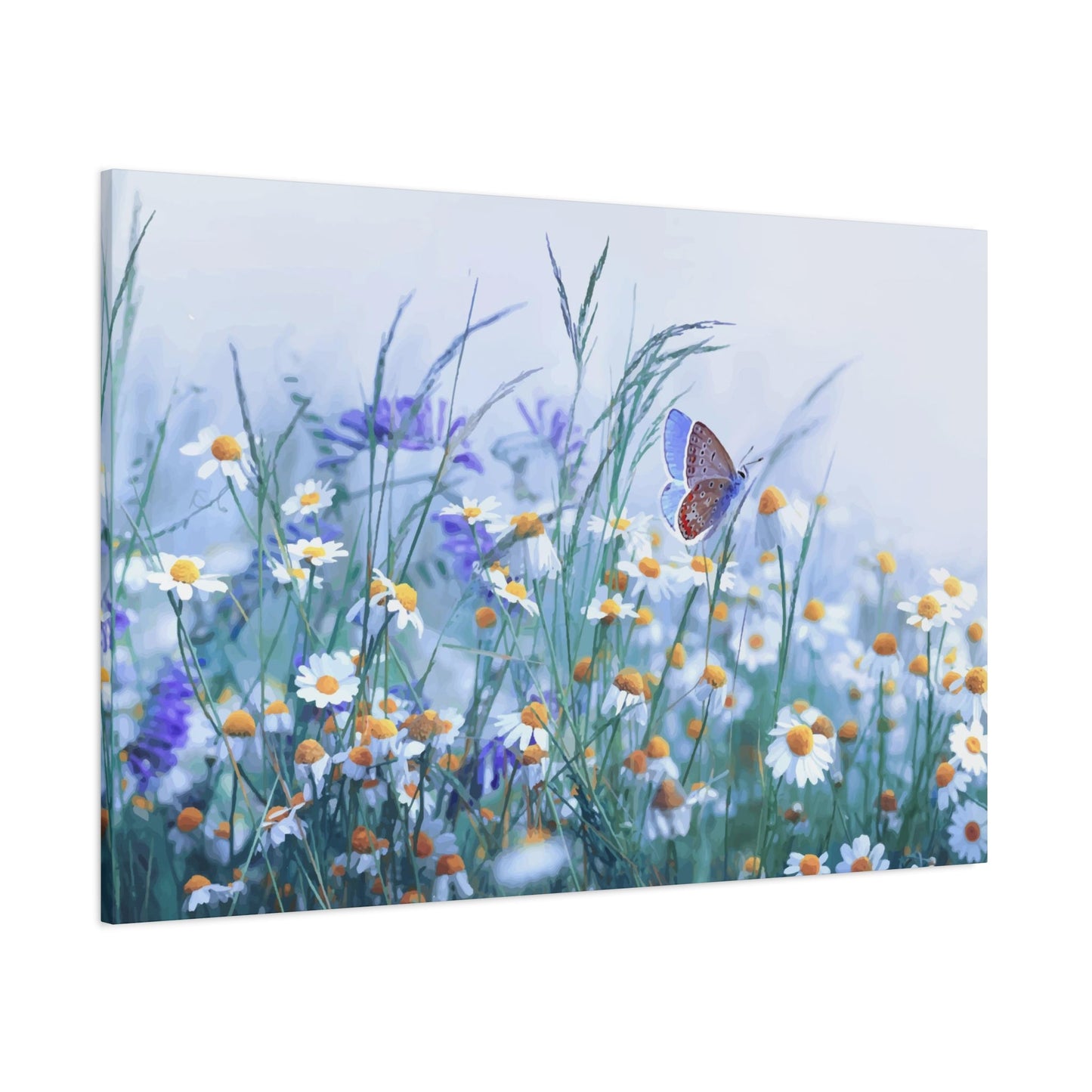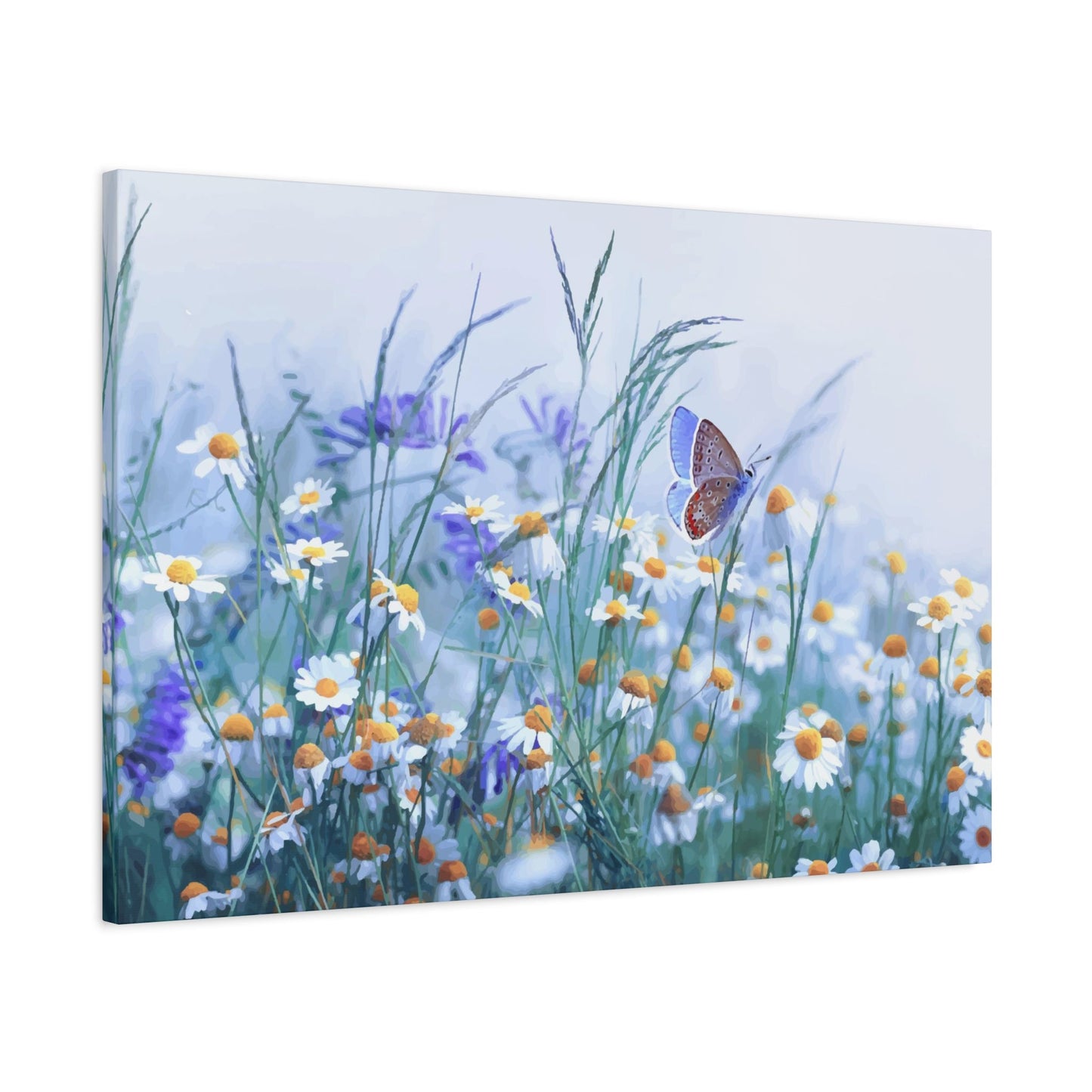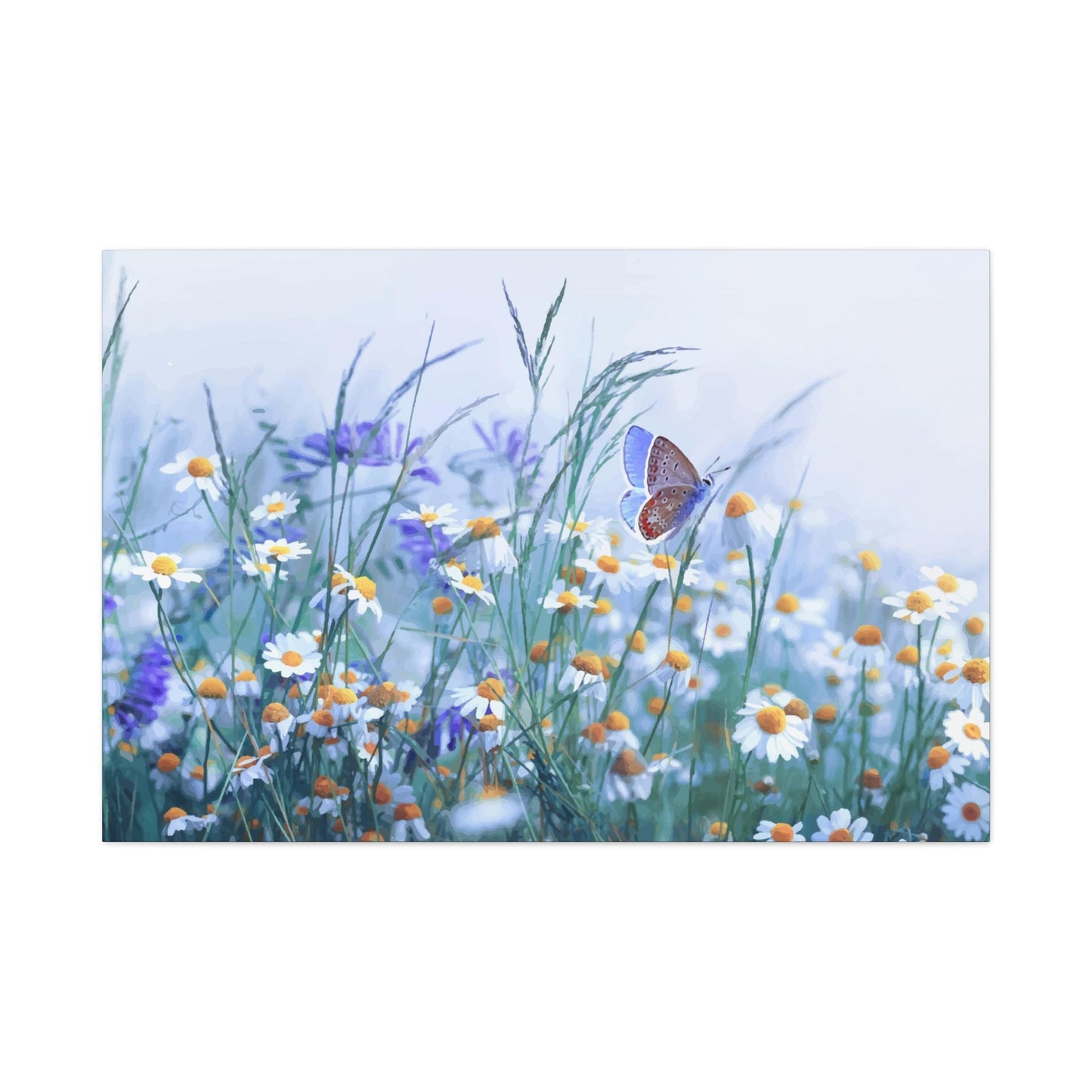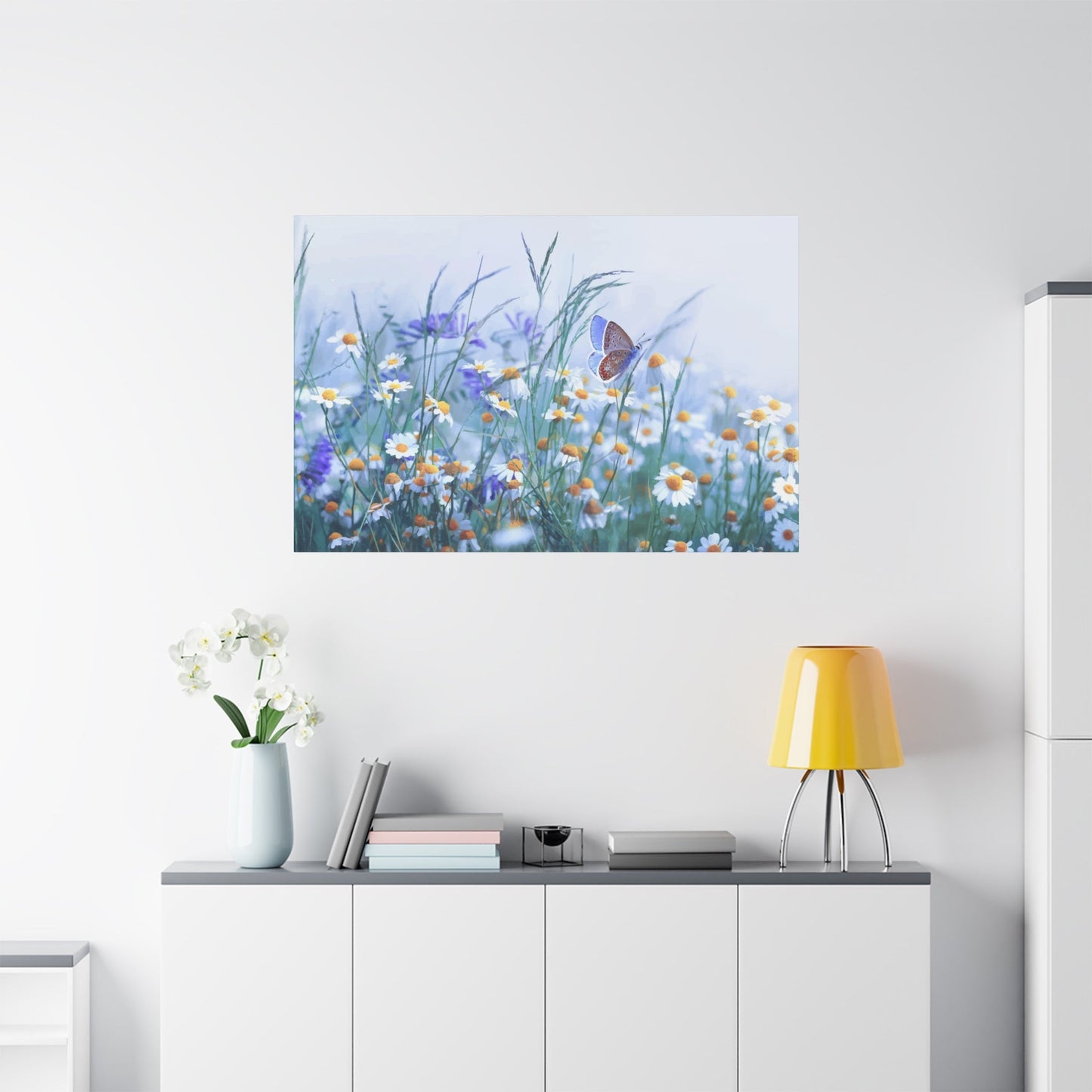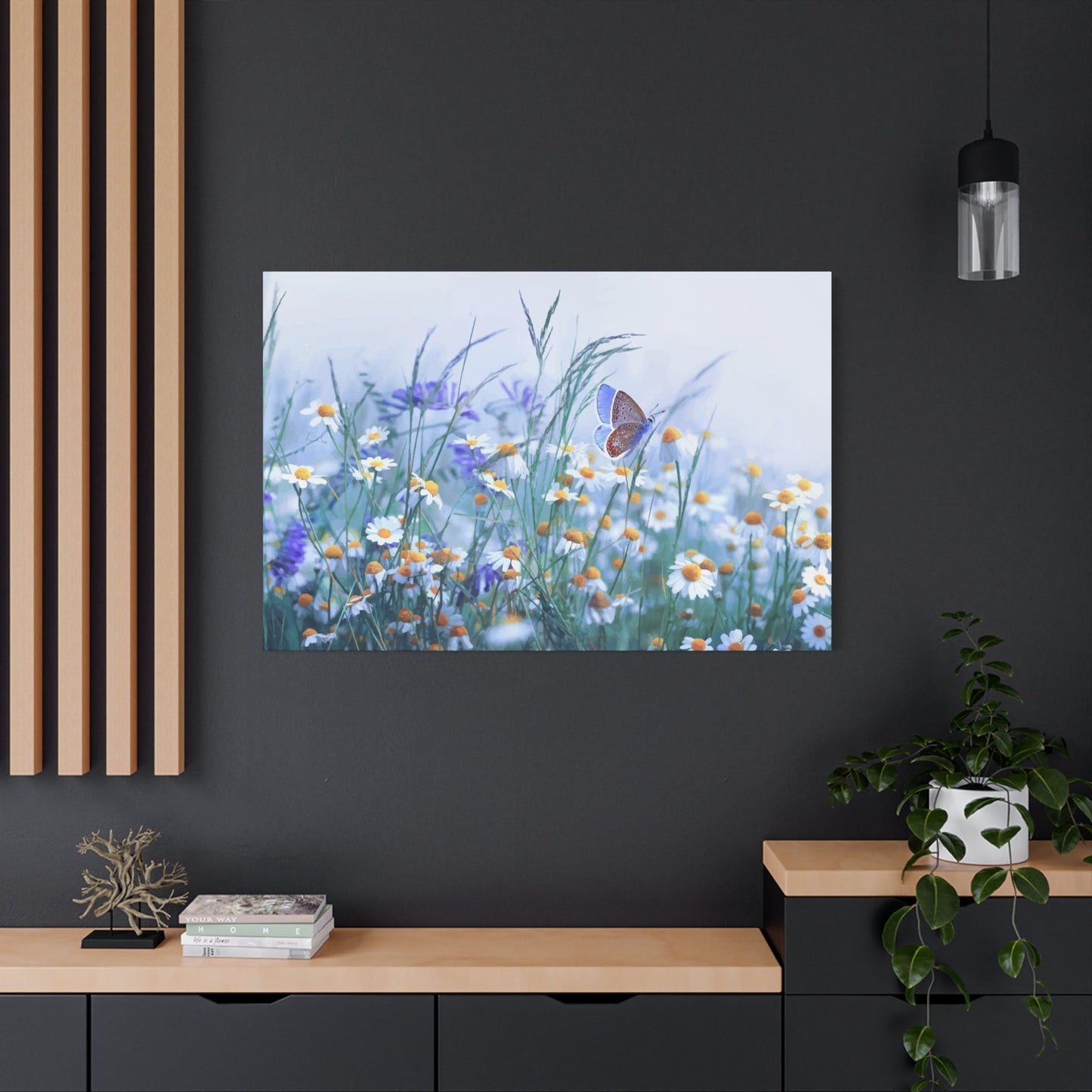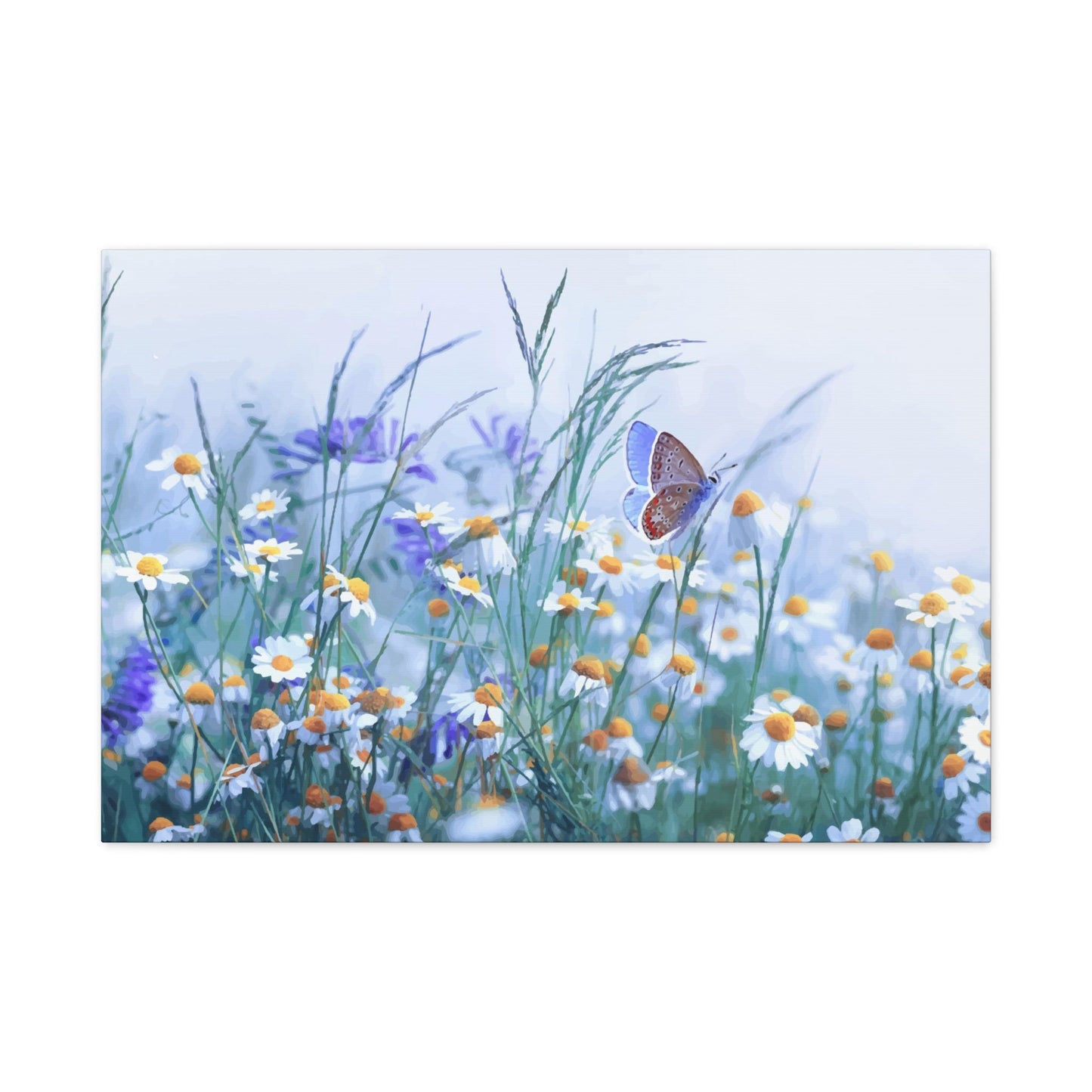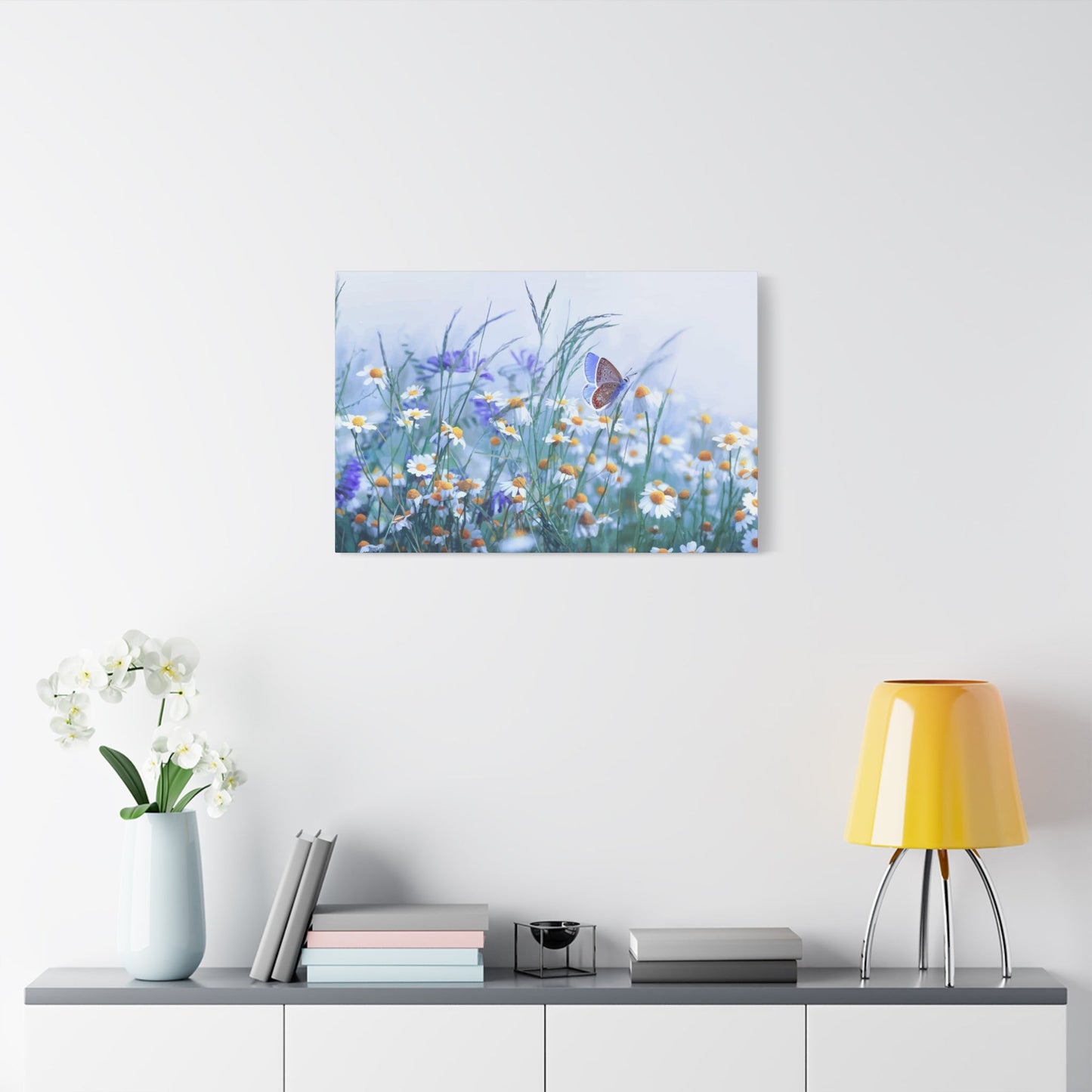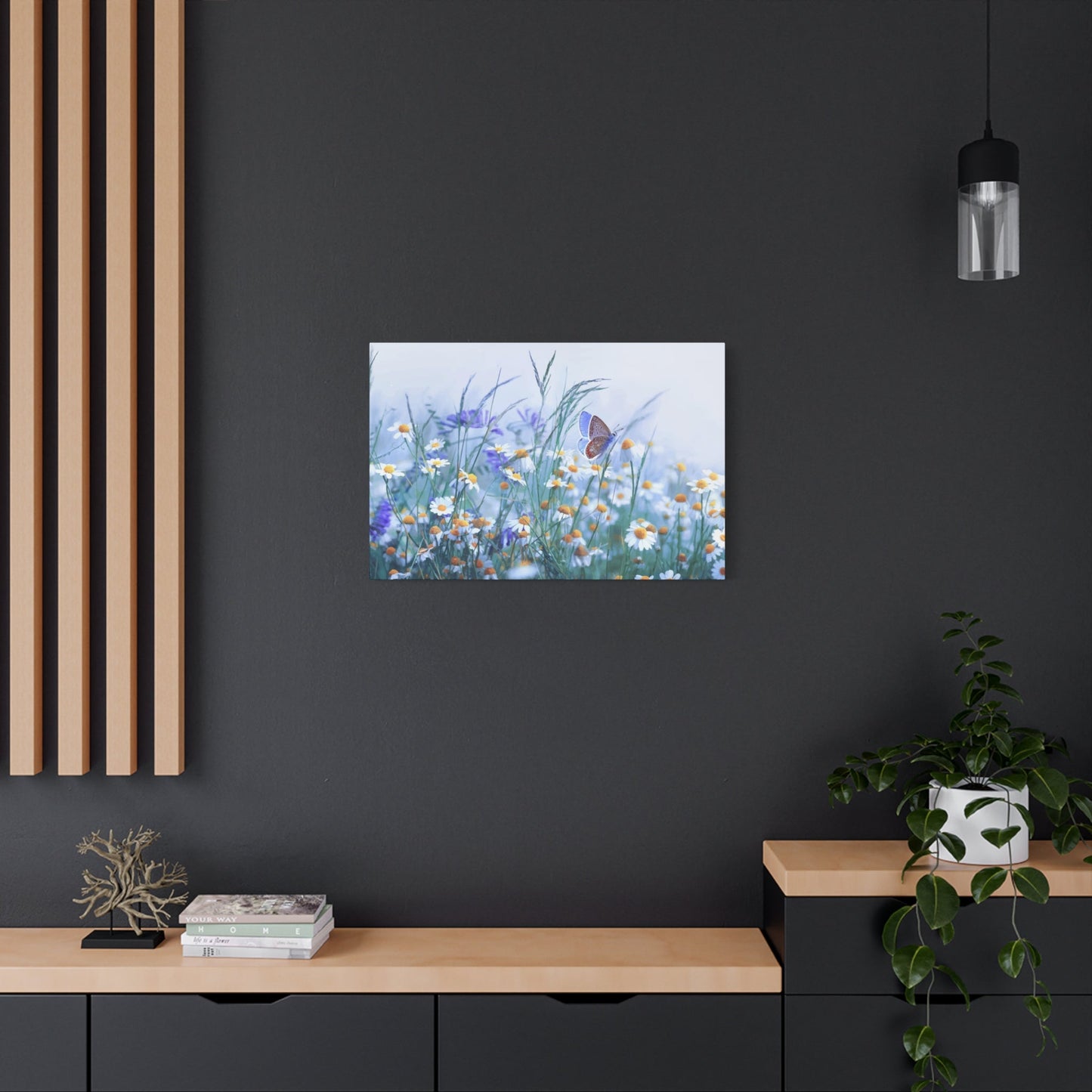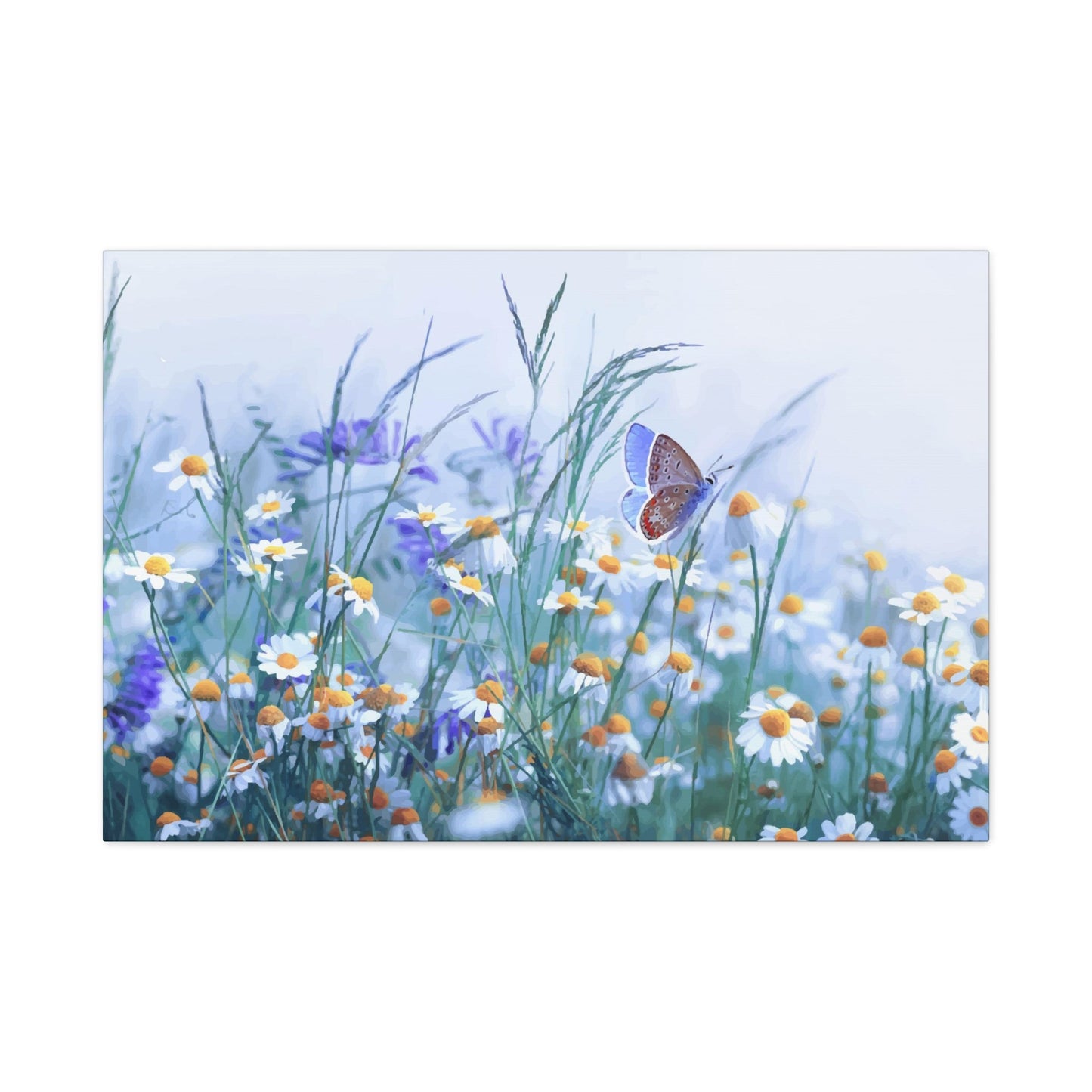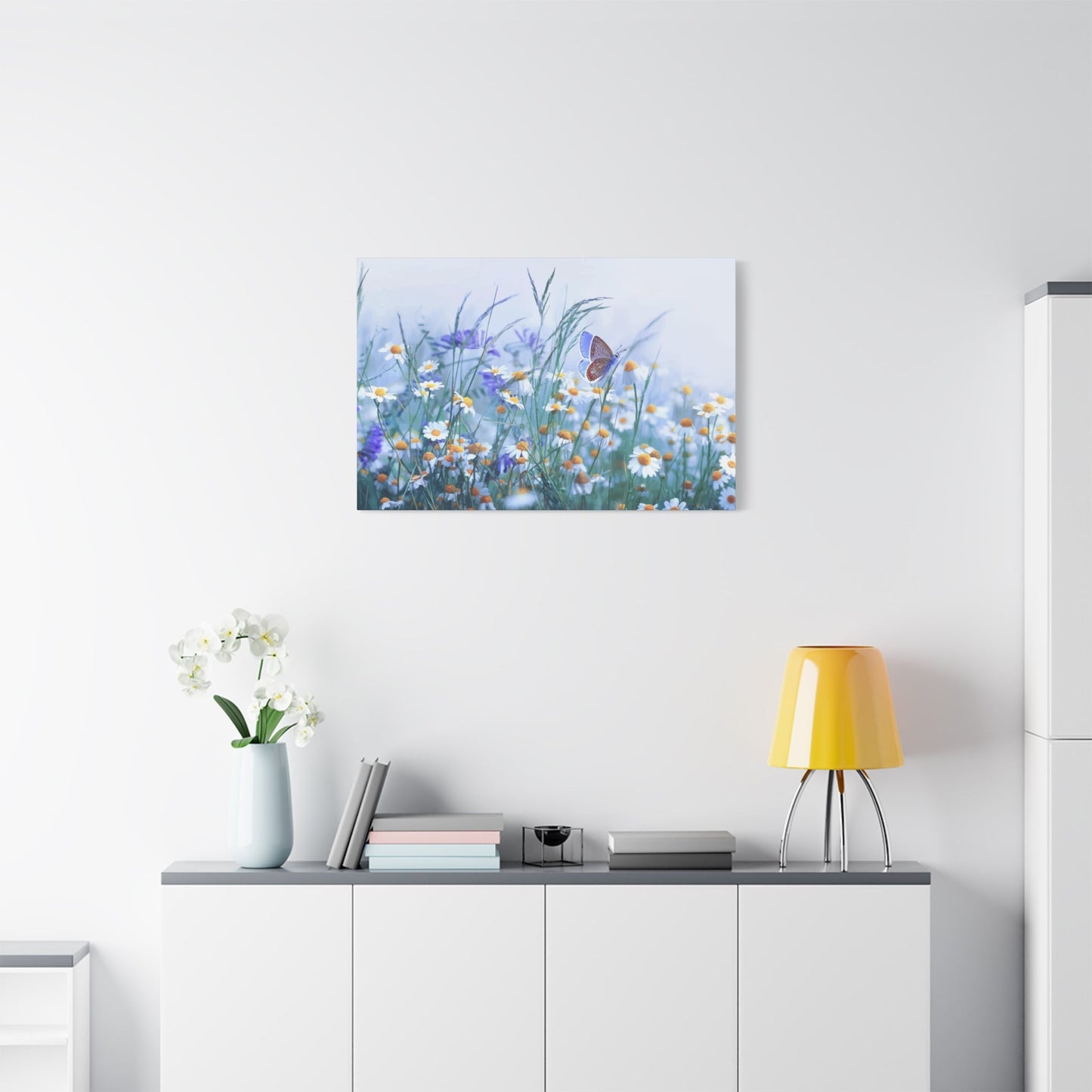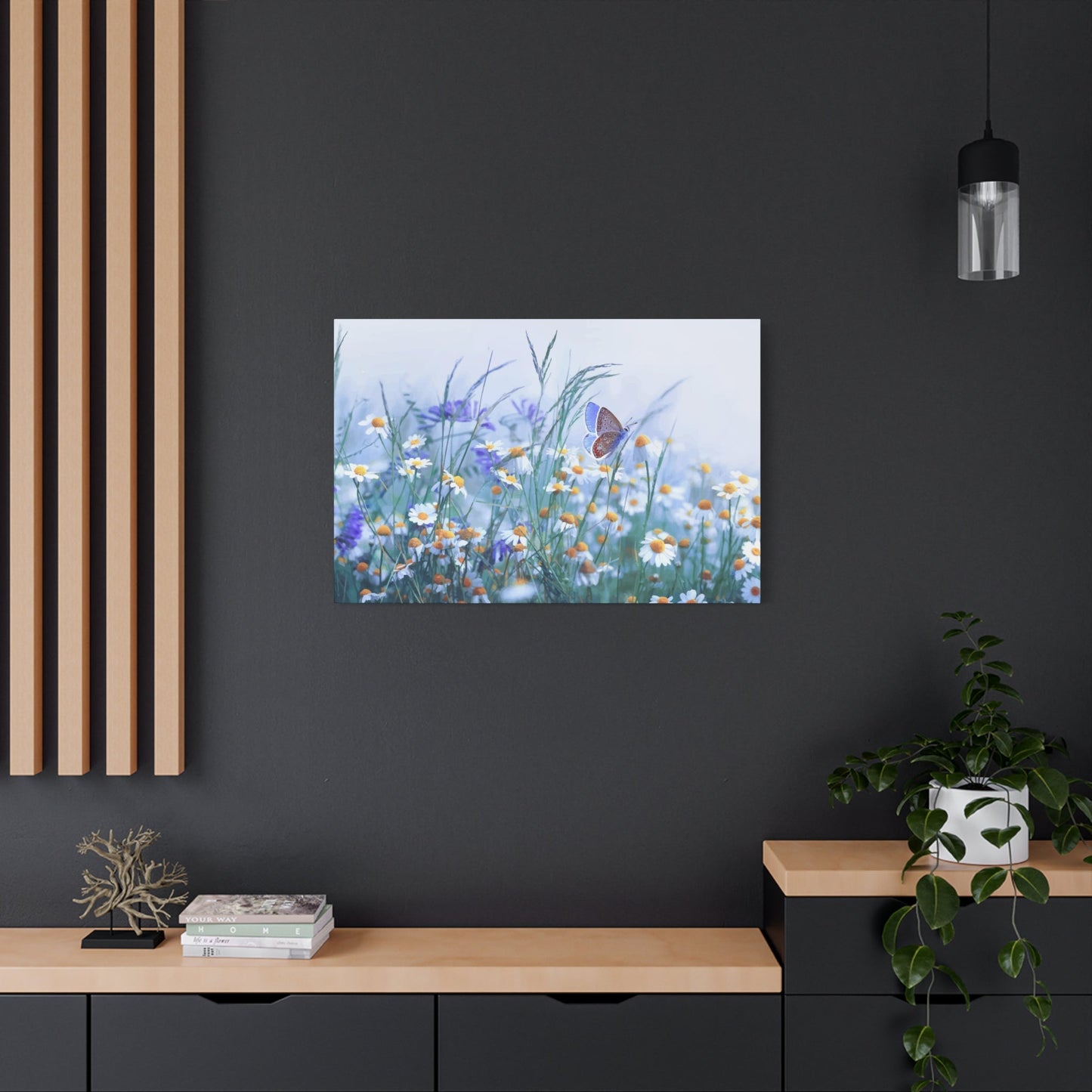Butterfly Wall Art for Small Spaces: Adding Elegance Without Overcrowding
Creating stunning interior spaces requires careful attention to decorative elements that bring both beauty and personality to your living areas. Large scale butterfly wall art has emerged as one of the most captivating ways to infuse natural elegance into modern homes. These magnificent pieces serve as focal points that draw the eye while simultaneously creating an atmosphere of lightness and freedom within any room.
The appeal of oversized butterfly artwork lies in its ability to capture the delicate beauty of nature while making a bold statement on your walls. When selecting these pieces for your home, consider how the intricate patterns and vibrant colors of butterfly wings can complement your existing decor while adding layers of visual interest that evolve throughout the day as lighting conditions change.
Contemporary interior designers increasingly recognize the transformative power of butterfly themed wall art in creating spaces that feel both sophisticated and whimsical. The natural asymmetry and organic shapes found in butterfly motifs provide a refreshing contrast to the clean lines and geometric patterns often found in modern architecture and furniture design.
Large butterfly art pieces work exceptionally well in homes where residents want to establish a connection with nature without sacrificing style or sophistication. These artworks can range from photorealistic representations that showcase the intricate details of actual butterfly species to abstract interpretations that capture the essence of flight and freedom through flowing lines and vibrant color palettes.
When incorporating butterfly wall art into your interior design scheme, consider the psychological impact these pieces can have on the occupants of your space. Research in environmental psychology suggests that natural imagery, particularly representations of creatures associated with transformation and renewal, can contribute to feelings of optimism and emotional wellbeing within residential environments.
The versatility of butterfly artwork makes it suitable for various interior design styles, from traditional and romantic to contemporary and minimalist. Whether you choose a single large statement piece or create a curated collection of smaller works, butterfly art can serve as the foundation for a cohesive decorating theme that celebrates the beauty of the natural world while maintaining the sophistication expected in modern living spaces.
Sophisticated Entrance Areas Enhanced by Butterfly Wall Art
The entrance to your home sets the tone for the entire interior experience, making it crucial to select artwork that creates an immediate positive impression on both residents and guests. Butterfly wall art in entryways serves multiple purposes beyond mere decoration, functioning as a symbol of welcome, transformation, and the beauty that awaits within your home.
When positioning large butterfly prints in entrance areas, consider the sight lines from both inside and outside your home. A well-placed butterfly artwork can be visible through windows or glass doors, creating intrigue and anticipation for visitors while providing residents with a beautiful focal point each time they return home. The movement suggested by butterfly imagery can create a sense of dynamic energy that counterbalances the static nature of architectural elements.
Lighting plays a crucial role in showcasing butterfly art in entryways, where natural light levels can vary significantly throughout the day. Consider installing adjustable lighting fixtures that can highlight the colors and textures of your butterfly artwork during evening hours, ensuring that these pieces remain visually impactful regardless of ambient lighting conditions.
Scale considerations become particularly important when selecting butterfly art for entrance areas, as these spaces often feature high ceilings or unique architectural features. Large format butterfly prints can help establish appropriate proportions while creating a sense of grandeur that elevates the entire entrance experience. The organic shapes of butterfly wings can soften harsh architectural angles while adding visual warmth to spaces that might otherwise feel cold or unwelcoming.
Color coordination between butterfly artwork and entrance area elements such as flooring, wall treatments, and architectural details helps create a cohesive design that feels intentional rather than randomly assembled. Consider how the colors in your chosen butterfly art will interact with existing elements while also thinking about seasonal changes in natural light that might affect color perception throughout the year.
The positioning height of butterfly art in entryways should account for the viewing angles of people of different heights while ensuring that the artwork remains visible and impactful from various positions within the space. Professional art installation techniques can help ensure that your butterfly prints are securely mounted and positioned for maximum visual impact.
Dramatic Wall Statements with Oversized Butterfly Wings
Creating dramatic visual impact through oversized butterfly wing imagery requires careful consideration of both artistic composition and interior design principles. These large format pieces work best when they serve as the primary focal point within a room, drawing attention through their impressive scale while maintaining the delicate beauty associated with butterfly motifs.
The paradox of combining lightness with drama makes oversized butterfly wing art particularly compelling in contemporary interiors. While butterflies represent delicacy and ephemeral beauty, presenting them at an enlarged scale creates a sense of monumentality that commands attention and respect. This juxtaposition between the fragile nature of the subject matter and the bold presentation creates visual tension that keeps viewers engaged.
When selecting oversized butterfly wing artwork, consider pieces that showcase the intricate patterns and textures found on actual butterfly wings. High resolution photography or detailed artistic renderings can reveal the complex geometries and color gradations that might be invisible to the naked eye when observing live butterflies. This level of detail becomes particularly striking when presented at large scale, creating an almost scientific appreciation for natural design.
The placement of oversized butterfly wing art requires careful attention to surrounding furnishings and architectural elements. These dramatic pieces work best when given adequate breathing room, allowing viewers to appreciate their full impact without visual competition from nearby decorative elements. Consider creating a gallery wall arrangement that features the oversized butterfly piece as the central element, surrounded by smaller complementary works that support rather than compete with the main attraction.
Color relationships become increasingly important when working with large format butterfly wing imagery. The enlarged scale means that colors will have greater visual weight within your interior space, potentially influencing the perceived temperature, energy level, and overall mood of the room. Consider how the dominant colors in your butterfly wing art will interact with existing paint colors, fabric selections, and natural light conditions throughout the day.
Framing and presentation options for oversized butterfly wing art should complement the dramatic nature of the subject matter while providing appropriate protection and support. Consider custom framing solutions that enhance rather than detract from the artwork, using materials and colors that support the overall design concept while ensuring long term preservation of the piece.
The lighting design for spaces featuring oversized butterfly wing art should emphasize the dimensional qualities and textural details that make these pieces so compelling. Track lighting, picture lights, or strategically placed accent fixtures can help create depth and visual interest while preventing glare or reflection issues that might interfere with viewing pleasure.
Natural Elements Integration Through Large Butterfly Home Decor
Incorporating natural elements into interior design has become increasingly important as urban living distances many people from regular contact with nature. Large butterfly decor serves as an effective bridge between indoor and outdoor environments, bringing the beauty and symbolism of natural transformation into residential spaces while maintaining the comfort and convenience of modern living.
The biophilic design movement recognizes the human need for connection with nature and advocates for the inclusion of natural elements, patterns, and imagery in built environments. Butterfly decor aligns perfectly with these principles, offering representations of natural beauty that can provide psychological and emotional benefits to residents while enhancing the visual appeal of interior spaces.
Large butterfly decorative elements can take many forms beyond traditional wall art, including sculptural pieces, textile applications, lighting fixtures, and functional objects that incorporate butterfly motifs. This diversity allows for creative layering of natural themes throughout a space while avoiding the monotony that might result from relying solely on one type of decorative element.
The seasonal associations of butterflies make them particularly effective for creating interiors that feel connected to natural cycles and changes. Spring emergence, summer abundance, and the preparation for transformation that occurs during autumn can all be referenced through butterfly imagery, allowing residents to maintain awareness of seasonal transitions even within climate controlled environments.
Color palettes inspired by butterfly wing patterns offer endless possibilities for interior design schemes that feel both natural and sophisticated. From the subtle earth tones found on moth wings to the brilliant jewel tones of tropical species, butterfly inspired colors can create cohesive design themes that celebrate natural beauty while remaining suitable for contemporary living spaces.
The integration of live plants with butterfly themed decor can enhance the natural atmosphere while providing actual habitat for beneficial insects when outdoor spaces are accessible. Consider pairing butterfly artwork with plants known to attract butterflies, creating educational opportunities for children while supporting local ecosystem health.
Large butterfly decor elements can serve as conversation starters and educational tools, particularly when selected to represent local species or those with interesting natural histories. This educational aspect adds depth to decorative choices while demonstrating environmental awareness and appreciation for biodiversity.
Luxurious Metallic Butterfly Art for Sophisticated Spaces
Metallic finishes in butterfly artwork represent the perfect fusion of natural inspiration with contemporary luxury, creating pieces that catch and reflect light while maintaining the organic beauty of butterfly forms. Gold, silver, copper, and bronze accents can elevate butterfly themed decor from casual nature imagery to sophisticated art that commands respect in upscale interior environments.
The reflective properties of metallic butterfly art create dynamic visual experiences that change throughout the day as lighting conditions shift. Morning sunlight might emphasize warm golden tones, while afternoon light could highlight cooler silver accents, ensuring that these pieces remain visually engaging and provide ongoing interest for residents and visitors alike.
When incorporating metallic butterfly art into luxury interiors, consider how these pieces will interact with other metallic elements throughout the space. Coordinating metals can create a cohesive design theme, while deliberately contrasting metallic finishes can add visual complexity and sophistication to rooms that might otherwise feel too uniform or predictable.
The manufacturing techniques used to create metallic butterfly art can range from traditional metal working methods to contemporary printing processes that incorporate metallic inks or foils. Understanding these production methods can help in selecting pieces that will maintain their beauty over time while providing the level of craftsmanship expected in luxury interior applications.
Scale considerations become particularly important when working with metallic butterfly art, as the reflective properties of these pieces can make them appear larger or more dominant than similar works in matte finishes. Consider how the visual weight of metallic elements will affect the balance of your overall room design while ensuring that these pieces enhance rather than overwhelm surrounding furnishings.
The placement of metallic butterfly art should take advantage of available light sources while avoiding positions where glare or excessive reflection might create viewing difficulties. Strategic positioning near windows, architectural lighting, or decorative fixtures can maximize the dynamic visual effects that make metallic finishes so appealing in interior applications.
Maintenance requirements for metallic butterfly art vary depending on the materials and production methods used, but generally require more attention than traditional prints or paintings. Understanding proper care procedures helps ensure that these investment pieces continue to provide beauty and sophistication for years to come while maintaining their original impact and appeal.
Minimalist Wall Design with Monochrome Butterfly Imagery
Monochrome butterfly prints offer the perfect solution for spaces where the beauty of butterfly forms is desired without the visual complexity of multicolored imagery. Black and white, sepia, or single color butterfly art can provide sophisticated focal points that complement minimalist design principles while maintaining the natural elegance associated with these graceful creatures.
The simplified color palette of monochrome butterfly art allows viewers to focus on form, composition, and texture rather than being distracted by chromatic relationships. This focus on fundamental design elements makes monochrome pieces particularly suitable for contemporary interiors where clean lines, simplified forms, and careful attention to proportion are valued over decorative complexity.
Contrast levels in monochrome butterfly imagery can be manipulated to create different moods and visual impacts within minimalist spaces. High contrast black and white pieces create dramatic focal points with strong visual impact, while softer, lower contrast treatments provide subtle enhancement that supports rather than dominates surrounding design elements.
The texture and surface treatments available in monochrome butterfly art can add dimensional interest to minimalist walls without introducing color complexity. Consider pieces that incorporate raised elements, varied paper surfaces, or alternative printing techniques that create tactile interest while maintaining the simplified aesthetic preferred in minimalist design approaches.
Scale relationships become particularly important in minimalist environments where fewer decorative elements must carry greater visual responsibility. Large format monochrome butterfly prints can serve as primary focal points, while smaller pieces might be grouped to create subtle visual interest without overwhelming the simplified aesthetic that defines minimalist interior design.
The framing and presentation of monochrome butterfly art should align with minimalist principles, emphasizing clean lines and simplified forms while providing appropriate protection and support for the artwork. Consider frameless mounting systems, simple metal frames, or other presentation methods that maintain focus on the artwork itself rather than decorative framing elements.
Lighting design for monochrome butterfly art can emphasize the tonal variations and textural qualities that might be less apparent in casual viewing conditions. Carefully positioned accent lighting can reveal subtle details while creating dramatic shadow effects that enhance the overall visual impact of these simplified but sophisticated artworks.
Youth Focused Butterfly Art for Children and Teen Spaces
Butterfly themed artwork in children and teen spaces serves multiple purposes beyond decoration, providing opportunities for education about natural science, encouraging appreciation for environmental beauty, and supporting emotional development through exposure to symbols of transformation and growth. Large butterfly art in these spaces should balance visual appeal with age appropriate content and developmental considerations.
The educational potential of butterfly art in youth spaces extends beyond simple nature appreciation to include lessons about life cycles, metamorphosis, ecosystem relationships, and biodiversity conservation. Selecting pieces that accurately represent real butterfly species can provide ongoing learning opportunities while maintaining the aesthetic appeal necessary for successful interior design.
Age appropriate styling considerations vary significantly between children and teen spaces, with younger children typically preferring brighter colors and more whimsical representations, while teenagers may gravitate toward more sophisticated artistic treatments that reflect their developing aesthetic preferences and desire for adult recognition of their maturing tastes.
The durability requirements for butterfly art in youth spaces often exceed those necessary for adult areas, as these pieces may be subject to more physical contact, changing decoration preferences, and the general wear that accompanies active young lifestyles. Consider materials and mounting methods that can withstand these challenges while maintaining visual appeal over extended periods.
Interactive elements can enhance the appeal of butterfly art in children spaces, such as pieces that incorporate moveable parts, changing imagery, or opportunities for personalization that allow young residents to feel ownership and connection with their decorative environment. These features can provide entertainment value while supporting developmental goals related to creativity and self expression.
The psychological impact of butterfly imagery on developing minds includes associations with transformation, beauty, freedom, and the natural world that can support positive emotional development and environmental awareness. These symbolic associations make butterfly art particularly appropriate for spaces where young people are experiencing their own processes of growth and change.
Safety considerations for butterfly art in youth spaces include secure mounting systems that prevent accidental damage or injury, non toxic materials that meet appropriate safety standards, and designs that avoid small parts or other elements that might pose hazards to younger children while maintaining visual appeal for older youth.
Seasonal Spring Decoration with Butterfly Wall Elements
Spring represents renewal, awakening, and the return of natural beauty after winter dormancy, making butterfly themed wall decor particularly appropriate for celebrating this transitional season. The emergence of butterflies from their winter hiding places parallels the broader awakening of nature, creating powerful symbolic connections that resonate with human experiences of renewal and fresh beginnings.
The timing of spring butterfly displays can coincide with natural emergence patterns in your local area, creating connections between indoor decorative choices and outdoor natural phenomena that help residents maintain awareness of seasonal cycles and environmental changes. This synchronization between interior design and natural rhythms can enhance the psychological benefits associated with seasonal decoration.
Color palettes appropriate for spring butterfly displays often emphasize the fresh, clean tones associated with new growth and renewal. Soft greens, gentle yellows, delicate pinks, and clear blues can create interior environments that feel fresh and optimistic while maintaining the sophisticated appeal necessary for adult living spaces.
The temporary nature of seasonal decoration allows for creative experimentation with butterfly themes that might feel overwhelming if maintained year round. Spring butterfly displays can be more elaborate or whimsical than permanent installations, providing opportunities to explore different artistic styles or color combinations without long term commitment to specific decorative choices.
Layering seasonal butterfly elements with existing permanent decor requires careful consideration of how temporary additions will interact with established design themes. Successful seasonal decoration enhances rather than conflicts with existing elements, creating cohesive environments that feel intentionally designed rather than randomly assembled.
The transition from spring butterfly themes to summer decoration should be planned in advance to ensure smooth seasonal progression that maintains design continuity while acknowledging changing natural conditions. Consider how spring butterfly elements can be modified or replaced to support evolving seasonal themes throughout the year.
Storage and preservation of seasonal butterfly decoration elements allows for reuse in subsequent years while protecting investment in quality pieces. Proper storage techniques help ensure that favorite seasonal items remain in good condition and continue to provide pleasure for many seasons to come.
Three Dimensional Butterfly Wall Art That Creates Visual Impact
Three dimensional butterfly wall art represents an evolution beyond traditional flat prints and paintings, creating pieces that project into living spaces and interact with lighting conditions to produce dynamic shadow effects and changing visual experiences throughout the day. These sculptural elements can serve as focal points that command attention while maintaining the delicate beauty associated with butterfly imagery.
The manufacturing techniques used to create three dimensional butterfly art vary widely, from hand crafted paper sculptures to laser cut metal pieces, each offering different aesthetic qualities and maintenance requirements. Understanding these production methods helps in selecting pieces that align with both design preferences and practical considerations for long term display in residential environments.
Lighting interactions with dimensional butterfly art create opportunities for dramatic visual effects that flat artwork cannot achieve. Strategic placement relative to natural light sources or artificial lighting can produce shifting shadow patterns that change throughout the day, providing ongoing visual interest and preventing the static appearance that sometimes affects two dimensional wall art.
The installation requirements for three dimensional butterfly pieces often exceed those necessary for traditional wall art, requiring secure mounting systems that can support the weight and dimensional characteristics of sculptural elements while ensuring safety and stability over extended display periods. Professional installation may be necessary for larger or more complex pieces.
Scale relationships become more complex with dimensional butterfly art, as these pieces occupy actual space within rooms rather than simply covering wall surfaces. Consider how the physical presence of dimensional elements will affect traffic patterns, furniture placement, and the overall spatial experience within your interior environment.
The maintenance requirements for three dimensional butterfly art typically exceed those of flat pieces, as dimensional elements can collect dust and may be more susceptible to damage from contact or environmental conditions. Understanding proper care procedures helps ensure that these investment pieces continue to provide beauty and visual impact over many years.
Color and material choices in dimensional butterfly art affect both appearance and durability, with some materials better suited to specific environmental conditions or maintenance requirements. Consider how material selections will interact with your existing decor while providing the longevity expected from quality art investments.
Harmonious Butterfly and Floral Theme Combinations
The natural relationship between butterflies and flowers provides an obvious foundation for coordinated interior design themes that celebrate the interconnected beauty of natural systems. Combining butterfly art with floral elements creates layered decorative schemes that can provide visual richness while maintaining thematic coherence throughout interior spaces.
The ecological relationships between butterflies and flowers offer educational opportunities that can enhance the meaningful content of decorative choices. Understanding pollination relationships, habitat requirements, and seasonal interactions between butterflies and plants can inform selection of coordinated elements that accurately represent natural systems while providing aesthetic appeal.
Color coordination between butterfly and floral themed elements requires careful attention to natural color combinations found in actual butterflies and their preferred flower species. This biological basis for color selection can provide sophisticated palettes that feel both natural and intentionally designed while avoiding the arbitrary color combinations that sometimes characterize themed decoration.
The scale relationships between butterfly and floral elements should reflect natural proportions while accounting for the visual requirements of interior design applications. Consider how the relative sizes of butterfly and flower imagery will affect the balance and visual weight distribution within your decorative scheme.
Seasonal progression opportunities exist when combining butterfly and floral themes, as both elements can be updated to reflect changing natural conditions throughout the year. Spring emergence, summer abundance, autumn preparation, and winter dormancy can all be referenced through coordinated butterfly and floral imagery that maintains design continuity while acknowledging natural cycles.
The layering of butterfly and floral elements can create visual depth and complexity that prevents the flat appearance sometimes associated with single theme decoration. Consider combining two dimensional and three dimensional elements, varying scales and positions, and incorporating actual plants alongside artistic representations to create rich, engaging environments.
Quality considerations become important when selecting multiple elements for coordinated butterfly and floral themes, as inconsistencies in artistic style, production quality, or materials can disrupt the cohesive appearance necessary for successful themed decoration. Establish quality standards that ensure all elements contribute positively to the overall design concept.
Ethereal Interiors with Soft Pastel Butterfly Canvases
Pastel colored butterfly canvas art creates ethereal interior atmospheres that combine the natural beauty of butterfly imagery with the soft, calming effects of muted color palettes. These pieces work particularly well in spaces where relaxation and tranquility are priorities, such as bedrooms, reading areas, or meditation spaces where visual stimulation should support rather than energize occupants.
The psychological effects of pastel colors include associations with calm, comfort, and gentle energy that can contribute to stress reduction and emotional wellbeing within residential environments. When combined with the transformational symbolism of butterfly imagery, pastel butterfly canvases can create spaces that feel both peaceful and optimistically oriented toward positive change and growth.
Color theory applications in pastel butterfly art require understanding of how muted tones interact with lighting conditions and surrounding color schemes. Pastel colors can appear washed out in insufficient lighting or overwhelmed by stronger colors in adjacent elements, making careful consideration of placement and coordination essential for successful interior applications.
The texture qualities available in canvas presentations of pastel butterfly art can add dimensional interest that prevents the flat appearance sometimes associated with pale color schemes. Consider pieces that incorporate varied brush techniques, impasto effects, or mixed media applications that create tactile interest while maintaining the soft visual qualities preferred in pastel color applications.
Size considerations for pastel butterfly canvases often favor larger formats that provide sufficient visual presence to anchor design schemes despite the subtle nature of muted color palettes. Small pastel pieces may disappear within interior environments, while appropriately scaled works can serve as gentle focal points that provide visual interest without overwhelming surrounding elements.
The framing and presentation of pastel butterfly canvases should support the ethereal quality of these pieces while providing necessary protection and mounting stability. Consider presentation methods that enhance rather than compete with the soft visual qualities that make pastel butterfly art appealing for tranquil interior applications.
Maintenance requirements for pastel butterfly canvases may include protection from direct sunlight that can cause fading of delicate colors, regular cleaning to prevent dust accumulation that can dull soft tones, and careful handling to preserve the surface qualities that contribute to their visual appeal.
Spatial Enhancement Through Large Butterfly Print Airiness
Large butterfly prints possess unique qualities that can enhance the perceived airiness and spaciousness of interior environments through their associations with flight, lightness, and freedom. The organic shapes and flowing lines characteristic of butterfly imagery can visually soften architectural boundaries while creating impressions of movement and openness that counteract feelings of confinement or claustrophobia.
The optical effects created by butterfly wing patterns can contribute to spatial enhancement through their complex geometries and repetitive designs that create visual depth and movement. These natural patterns can trick the eye into perceiving greater dimensional space while providing focal points that draw attention upward and outward rather than emphasizing room boundaries or limitations.
Color selection in large butterfly prints significantly affects their ability to enhance spatial perception, with lighter colors generally contributing to impressions of openness while darker tones may have the opposite effect. Understanding color psychology and spatial perception helps in selecting butterfly prints that support rather than counteract spatial enhancement goals.
The positioning of large butterfly prints within rooms should take advantage of sight lines and viewing angles that maximize their spatial enhancement effects. Strategic placement can create the impression of expanded space while providing visual interest that prevents the empty appearance sometimes associated with attempts to maximize spatial perception through minimal decoration.
Scale relationships between butterfly prints and room dimensions require careful consideration to achieve optimal spatial enhancement effects. Prints that are too small may fail to provide sufficient visual impact, while oversized pieces might overwhelm spaces and create the opposite of the intended airiness effect.
Lighting considerations for spatial enhancement through butterfly prints include both natural and artificial light sources that can emphasize the visual qualities contributing to impressions of openness and airiness. Proper lighting can enhance color vibrancy, reveal textural details, and create shadow effects that add dimensional depth to flat print surfaces.
The integration of large butterfly prints with other spatial enhancement techniques can create cumulative effects that significantly improve the livability and appeal of interior spaces. Consider coordinating butterfly print placement with mirror positioning, lighting design, and furniture selection to create comprehensive approaches to spatial enhancement.
Vertical Wall Treatment with High Wall Butterfly Art
High wall spaces present unique decorating challenges that require careful consideration of scale, proportion, and visual impact to create successful design solutions. Vertical butterfly art designed specifically for high wall applications can help establish appropriate proportions while providing visual interest that draws the eye upward and creates impressions of grandeur and spaciousness.
The sight line considerations for high wall butterfly art differ significantly from those for standard height installations, as viewing angles and distances affect how artwork is perceived and appreciated. Understanding these unique viewing conditions helps in selecting and positioning pieces that remain visually effective despite their elevated positions.
Scale requirements for high wall butterfly art typically exceed those suitable for standard installations, as increased viewing distances necessitate larger formats to maintain visual impact and readability. Consider how the details and colors in butterfly imagery will appear when viewed from floor level to ensure that selected pieces provide appropriate visual presence.
Installation challenges for high wall butterfly art include access requirements, mounting system specifications, and safety considerations that may not apply to standard height installations. Professional installation services may be necessary to ensure proper mounting and positioning while maintaining safety standards for both installers and future occupants.
The lighting requirements for high wall butterfly art may include specialized fixtures that can effectively illuminate elevated artwork without creating glare or shadow problems for room occupants. Consider track lighting, architectural lighting, or custom solutions that provide appropriate illumination for high wall applications.
Color and contrast considerations for high wall butterfly art should account for the increased viewing distances and potential lighting variations that affect how artwork appears from floor level. Higher contrast images may be necessary to maintain visual clarity, while color selections should consider how they will appear under varying lighting conditions throughout the day.
The integration of high wall butterfly art with architectural features such as moldings, beams, or decorative elements requires careful planning to create cohesive designs that enhance rather than compete with existing architectural details. Consider how butterfly imagery can complement architectural features while providing appropriate visual weight and interest.
Butterfly Art Material Selection and Quality Considerations
The longevity and visual impact of butterfly wall art depend significantly on the materials and production methods used in their creation. Understanding the characteristics of different materials helps in making informed selections that balance aesthetic preferences with practical considerations such as durability, maintenance requirements, and environmental factors that affect long term performance.
Paper based butterfly prints offer the widest range of artistic styles and printing techniques, from traditional lithography to contemporary digital printing methods. The quality of paper substrates affects both the appearance and durability of prints, with archival quality papers providing superior color retention and resistance to environmental degradation compared to standard printing papers.
Canvas based butterfly art provides texture and dimensional qualities that can enhance visual appeal while offering different mounting and framing options compared to paper prints. The canvas weaving patterns can add subtle textural interest that complements the organic nature of butterfly imagery while providing durability advantages for high traffic areas.
Metal substrate butterfly art offers unique visual qualities and exceptional durability for contemporary interior applications. Aluminum, steel, and other metal surfaces can provide brilliant color reproduction and weather resistance that makes them suitable for challenging environmental conditions while offering distinctive aesthetic qualities not available with traditional substrates.
Glass and acrylic presentations of butterfly art provide protective benefits while offering clean, contemporary aesthetics that work well in modern interior design schemes. These presentation methods can enhance color vibrancy and provide protection from environmental factors while requiring different mounting and handling considerations.
The printing and production methods used for butterfly art significantly affect both quality and longevity, with archival quality inks and professional production techniques providing superior results compared to consumer level printing processes. Understanding production quality indicators helps ensure that art investments provide lasting beauty and value.
Framing materials and techniques contribute significantly to both the appearance and preservation of butterfly art, with different approaches suitable for different artistic styles and interior design applications. Professional framing services can provide custom solutions that enhance artwork while ensuring proper preservation and mounting security.
Professional Installation and Display Techniques for Butterfly Art
Proper installation of butterfly wall art ensures both visual impact and long term stability while protecting valuable artwork from damage and maintaining safety standards within residential environments. Professional installation techniques account for factors such as wall construction, artwork weight and dimensions, environmental conditions, and aesthetic considerations that affect successful display results.
Wall surface preparation may be necessary before installing butterfly art to ensure proper adhesion and support for mounting systems. Different wall materials require specific mounting approaches, with considerations for structural integrity, surface texture, and potential damage from installation hardware that could affect both artwork security and wall appearance.
Mounting system selection depends on artwork characteristics such as size, weight, framing style, and intended display permanence. Temporary mounting systems allow for easy repositioning and seasonal changes, while permanent installations require more substantial support systems that ensure long term stability and security.
Height and positioning considerations for butterfly art installation should account for furniture placement, traffic patterns, lighting conditions, and viewing angles that affect how artwork is perceived and appreciated. Professional installers understand these relationships and can recommend optimal positioning for maximum visual impact and viewing pleasure.
Leveling and alignment techniques ensure that butterfly art appears properly positioned and professionally installed while avoiding the amateur appearance that can result from improper installation methods. Professional tools and techniques create precise alignments that enhance the overall visual impact of art displays.
Safety considerations during installation include protection for both artwork and surrounding furnishings, proper handling techniques that prevent damage to delicate pieces, and installation methods that ensure long term stability without creating hazards for room occupants.
Post installation care and maintenance guidelines help ensure that butterfly art continues to provide beauty and visual impact throughout its display life. Understanding proper care procedures, environmental considerations, and signs of potential problems helps protect art investments while maintaining their aesthetic contributions to interior spaces.
Color Psychology and Butterfly Art in Interior Design
The colors present in butterfly wall art significantly influence the psychological and emotional atmosphere of interior spaces, making color selection an important consideration that extends beyond simple aesthetic preferences. Understanding color psychology principles helps in selecting butterfly art that supports desired moods and activities within specific rooms while contributing to overall interior design goals.
Warm color palettes in butterfly art, including reds, oranges, and yellows, can create energizing and sociable atmospheres that work well in gathering spaces such as living rooms, dining areas, and family rooms where interaction and activity are desired. These colors can stimulate conversation and create welcoming environments that encourage social connection and engagement.
Cool color palettes featuring blues, purples, and greens can promote relaxation and contemplation, making them suitable for private spaces such as bedrooms, studies, and meditation areas where calm and focus are priorities. Cool colored butterfly art can help create restful environments that support sleep, concentration, and emotional equilibrium.
Neutral color schemes in butterfly art offer versatility and longevity while providing sophisticated aesthetic appeal that complements a wide range of interior design styles. Neutral butterfly pieces can serve as foundation elements in decorating schemes that evolve over time without requiring artwork changes to accommodate new color preferences or furnishing updates.
The intensity and saturation of colors in butterfly art affect their psychological impact, with highly saturated colors creating more dramatic effects while muted tones provide gentler influences on mood and perception. Understanding these relationships helps in selecting appropriate color intensities for specific applications and desired atmospheric effects.
Color contrast levels in butterfly art can create different types of visual excitement and energy within interior spaces. High contrast pieces provide dramatic focal points that command attention, while low contrast artwork offers subtle enhancement that supports rather than dominates surrounding design elements.
The cultural and symbolic associations of colors used in butterfly art can add layers of meaning that enhance the personal significance of decorative choices. Understanding cultural color symbolism helps in selecting pieces that resonate with personal values and cultural backgrounds while avoiding inadvertent conflicts with cultural sensitivities.
Butterfly Art Integration with Smart Home Technology
Modern smart home systems offer innovative opportunities for integrating butterfly wall art with technology that can enhance both functionality and aesthetic appeal. Digital displays, automated lighting systems, and interactive features can transform traditional static artwork into dynamic elements that respond to environmental conditions, time of day, or user preferences.
Digital butterfly art displays can provide changing imagery that reflects seasonal variations, time of day, or mood preferences while maintaining the natural beauty associated with butterfly themes. High resolution displays can showcase photographic quality butterfly imagery with color accuracy and detail that rivals traditional printing methods while offering infinite variety and customization options.
Automated lighting systems can enhance traditional butterfly art through programmed illumination changes that emphasize different aspects of artwork throughout the day or in response to occupancy patterns. Smart lighting can create dramatic effects, highlight specific colors or details, or adjust brightness levels to optimize viewing conditions under varying natural light conditions.
Interactive butterfly art installations can respond to presence, touch, or voice commands to provide educational information, changing displays, or environmental controls that integrate artwork with broader smart home systems. These interactive features can enhance engagement while providing functional benefits that extend beyond traditional decorative applications.
Environmental monitoring integration can adjust butterfly art presentations based on humidity, temperature, or air quality conditions that affect both artwork preservation and occupant comfort. Smart systems can provide alerts for conditions that might damage artwork while automatically adjusting environmental controls to maintain optimal display conditions.
Home security integration can include butterfly art displays in monitoring systems while providing discrete security features that maintain aesthetic appeal. Motion sensors, cameras, and other security devices can be integrated into art installations without compromising their decorative function or visual impact.
Energy efficiency considerations for technology enhanced butterfly art include power consumption, heat generation, and environmental impact factors that affect both operating costs and sustainability goals. Modern technology offers energy efficient options that minimize environmental impact while providing enhanced functionality and aesthetic benefits.
Butterfly Art as Investment and Collectible Items
Original butterfly artwork and limited edition prints can represent significant financial investments that provide both aesthetic enjoyment and potential appreciation over time. Understanding the art market, authentication procedures, and preservation requirements helps in making informed decisions about butterfly art acquisitions while protecting investment value and ensuring long term satisfaction.
Artist reputation and provenance documentation significantly affect the investment potential of butterfly art pieces, with established artists and verified authenticity commanding higher prices and better appreciation prospects. Research into artist backgrounds, exhibition histories, and market performance helps inform investment decisions while ensuring acquisition of quality pieces.
Edition sizes and numbering systems for limited edition butterfly prints affect both current pricing and future value appreciation, with smaller editions generally commanding higher prices while providing better investment prospects. Understanding printmaking terminology and edition structures helps in evaluating the investment potential of different pieces.
Authentication and documentation requirements for valuable butterfly art include certificates of authenticity, provenance records, and condition reports that establish legitimacy while providing necessary information for insurance and resale purposes. Proper documentation helps protect investment value while facilitating future transactions.
Conservation and preservation requirements for butterfly art investments may include climate controlled storage, professional framing, regular condition assessments, and specialized handling procedures that protect artwork while maintaining its investment value. Understanding these requirements helps in budgeting for ownership costs while ensuring proper care.
Market trends and appreciation patterns for butterfly themed artwork can inform acquisition timing and selection strategies while providing insights into future value prospects. Following auction results, gallery sales, and market analysis helps in making informed investment decisions while understanding market dynamics.
Insurance and security considerations for valuable butterfly art include appropriate coverage levels, security system requirements, and documentation procedures that protect investments while providing peace of mind for collectors. Professional appraisals and regular valuations help ensure adequate insurance coverage while tracking investment performance.
Conclusion:
Butterfly wall art is an excellent choice for small spaces where every detail counts. Its delicate and graceful imagery brings a sense of lightness and movement, effortlessly enhancing a room without overwhelming it. Whether through subtle pastel tones, minimalist line drawings, or soft watercolor designs, butterfly art introduces elegance and a touch of nature’s beauty while maintaining a clean, airy atmosphere.
In compact rooms, where clutter can quickly make the space feel cramped, butterfly wall art’s simplicity and finesse work to open up the environment visually. The natural symbolism of butterflies—transformation, freedom, and renewal—also adds a layer of positivity and inspiration, making your small space feel thoughtfully curated and uplifting.
Ideal for bedrooms, home offices, or cozy reading nooks, butterfly wall art can be combined with other minimal decor elements to maintain balance and harmony. Choosing the right scale and placement is key, allowing these gentle artworks to shine without competing for attention.
In essence, butterfly wall art offers a perfect blend of sophistication and subtlety, proving that even the smallest spaces can be transformed into elegant, serene sanctuaries. It’s a beautiful way to bring charm and personality to your home without overcrowding, making every corner a celebration of delicate artistry and natural grace.













